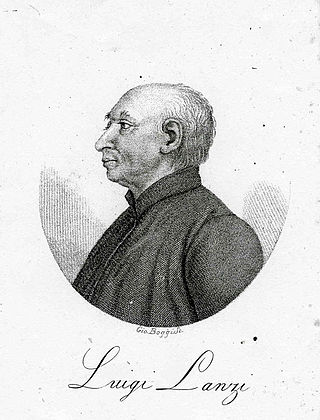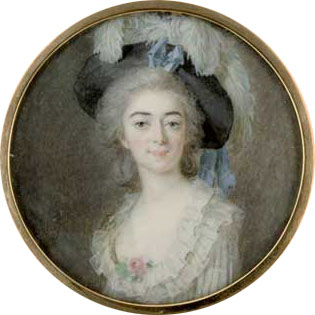
The University of Bologna is a public research university in Bologna, Italy. Founded in 1088 by an organised guild of students (studiorum), it is the oldest university in continuous operation in the world, and the first degree-awarding institution of higher learning. At its foundation, the word universitas was first coined. With over 90,000 students, it is the second largest university in Italy after La Sapienza in Rome.

Lonicera etrusca is a species of honeysuckle known by the common name Etruscan honeysuckle. It is native to Southern Europe, Western Asia and North Africa and it is known elsewhere, including the Pacific Northwest of North America, as an introduced species where it has escaped cultivation. It is kept in gardens as an ornamental plant.

Luigi Lanzi was an Italian art historian and archaeologist. When he died he was buried in the church of the Santa Croce at Florence by the side of Michelangelo.

Laura Maria Caterina Bassi Veratti was an Italian physicist and academic. Recognized and depicted as "Minerva", she was the first woman to have a doctorate in science, and the second woman in the world to earn the Doctor of Philosophy degree. Working at the University of Bologna, she was also the first salaried female teacher in a university. At one time the highest paid employee of the university, by the end of her life Bassi held two other professorships. She was also the first female member of any scientific establishment, when she was elected to the Academy of Sciences of the Institute of Bologna in 1732 at 21.

Agostino Bassi, sometimes called de Lodi, was an Italian entomologist. He preceded Louis Pasteur in the discovery that microorganisms can be the cause of disease. He discovered that the muscardine disease of silkworms was caused by a living, very small, parasitic organism, a fungus that would be named eventually Beauveria bassiana in his honor. In 1844, he stated the idea that not only animal (insect), but also human diseases are caused by other living microorganisms; for example, measles, syphilis, and the plague.

Crambinae is a large subfamily of the lepidopteran family Crambidae, the crambid snout moths. It currently includes over 1,800 species worldwide. The larvae are root feeders or stem borers, mostly on grasses. A few species are pests of sod grasses, maize, sugar cane, rice, and other Poaceae. The monophyly of this group is supported by the structure of the tympanal organs and the phallus attached medially to the juxta, as well as genetic analyses.

G-protein coupled receptor 143 is a protein encoded by the GPR143 gene in humans.

Giovanna Bassi (1762–1834) was an Italian ballerina who spent the majority of her career in Sweden. She was regarded as the prima donna of the Swedish Ballet during the Gustavian age.

Ancylolomia is a genus of moths of the family Crambidae described by Jacob Hübner in 1825.

Calamotropha is a genus of moths of the family Crambidae.
Classeya is a genus of moths of the family Crambidae.

Prionapteryx is a genus of moths of the family Crambidae.

Cymindis is a genus of ground beetle native to the Palearctic, the Near East, and North Africa. It contains the following species:
Carlo Bassi was an Italian entomologist.

An essay on the classification of the parasitic Hymenoptera of Britain which correspond with the Ichneumones minuti of Linnaeus is a Victorian monograph of entomology published in the Entomological Magazine between 1833 and 1838, by the Irish entomologist Alexander Henry Haliday.

Gastrochaena is a genus of saltwater clams, marine bivalve molluscs in the family Gastrochaenidae. The type species of this genus is Gastrochaena cuneiformis.
Bassi is a surname. Notable people with the surname include:
Sofía Bassi was a Mexican painter and writer noted for her surrealist work as well as her personal life, which included five years in prison for murder. She maintained an active career despite incarceration, painting her first mural in prison in Acapulco, with the assistance of Alberto Gironella, José Luis Cuevas, Rafael Coronel and Francisco Corzas. This mural can now be found at the municipal building of the city.

The Villa dei Sette Bassi was the second-largest ancient Roman villa or monumental palace in the suburbs after the Villa of the Quintilii.

Events from the year 1834 in Sweden














